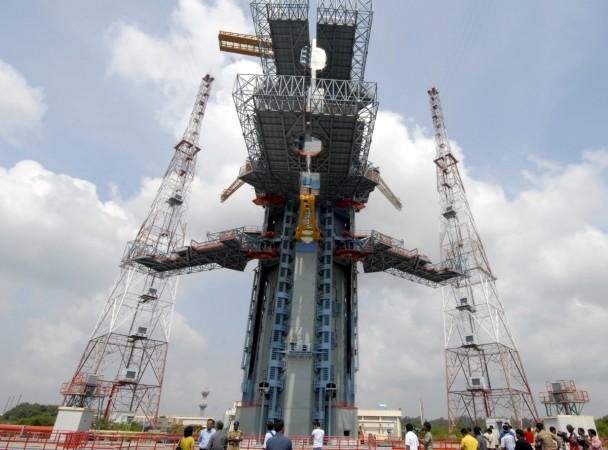![ISRO has cleared GSAT-11 for launch [Representational Image] GSLV-F08/GSAT-6A](https://data1.ibtimes.co.in/en/full/684371/gslv-f08-gsat-6a.jpg?h=450&l=50&t=40)
The Indian Space Research Organisation (ISRO) may have lost contact with communication satellite GSAT-6A about 48 hours after its launch on March 29, but that clearly hasn't dampened its spirits. The organisation has a busy year ahead and has now cleared the GSAT-11, a communication satellite, for launch.
The GSAT-11 was scheduled to be launched on May 26 from Kourou, a site in South America, but was recalled over doubts of possible glitches. The communication satellite was then thoroughly checked and is now found to be free of glitches.
"After a thorough check and additional tests, it was found fit for launch," the Press Trust of India quoted an ISRO official as saying.
However, the exact date for the launch is yet to be announced and the space agency is waiting for a slot from Arianespace. The satellite will be launched after it gets a date from the launchpad.
GSAT-11 communication satellite fact file
The GSAT-11 is a communication satellite and said to be the "heaviest satellite ever," weighing about 5,725 kilograms.
The cost of the mission has been pegged at around Rs 500 crore and its payloads have reportedly been built at the Space Application Center in Ahmedabad. The satellite is known to be very large and each solar panel is reportedly as large as a room and it will carry 40 transponders with 14 gigabit per second (gbps) transfer speed.
ISRO had earlier also said that the GSAT-11 had cleared all the tests and no anomaly had been found in the communication satellite. "All the tests on Gsat-11 at Bengaluru's ISRO Satellite Centre (ISAC) are over. We have found no anomaly. We are in the process of discussion with Arianespace to fix the next launch date for our satellite," ISRO chief K Sivan had told the Times of India.
The preparations for the launch of GSAT-11 comes just a few months after the space agency lost contact with the GSAT-6A. In a statement on April 1, the ISRO has said that the second orbit raising operation was successful, but it lost touch with the satellite thereafter.
The second orbit raising operation of GSAT-6A satellite has been successfully carried out by LAM Engine firing for about 53 minutes on March 31, 2018 in the morning. After a successful long duration firings, when the satellite was on course to normal operating configuration for the third and final firing, scheduled for April 1, 2018, communication from the satellite was lost. Efforts are underway to establish the link with the satellite," ISRO said.
The space agency also has a few other launches scheduled this year, including the much-talked-about Chandrayaan-2. Said to be the toughest and most important missions of ISRO until now, the Chandrayaan-2 is likely to take off in October.

The spacecraft will be carried by heavy-payload lifter GSLV Mk II and will weigh about 3,290kg, which includes an orbiter, a rover and a lander to the moon.
The mission is said to be worth Rs 800 crore (about $123 million) and the satellite will spend 14 moon days on the surface, where it will carry out several tests. The rover will then send images and other information about the moon's surface back to the earth.








